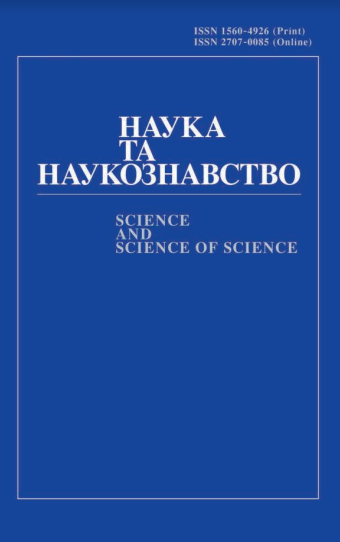Defense-Related Projects in Research Institutes of the Academy of Sciences of the Ukrainian SSR in 1975
DOI:
https://doi.org/10.15407/sofs2020.02.146Keywords:
military and defense themes, archive document, State Planning Committee of the UkrSSR, institutes, directives, new products, customersAbstract
The publication elaborates on the process of gradual incorporation of the Ukrainian research system in the military-industrial complex (MIC) of the USSR, accompanied by the enhancing secrecy of planning of military orders. This is confirmed by the provided information about the increasing numbers of directives issued by the Military-Industrial Committee of USSR in parallel with the decreasing scopes of joint directives by the Central Committee of the Communist Part of the Soviet Union and the Council of Ministers of the USSR, the removal of Ukrainian power offices (the government and the Central Committee of the Communist Party of Ukraine) from control over the military industry of Ukraine, commissioning military and deference orders to research institutions of Ukraine, the growing number of secret themes performed by leading institutes of the National Academy of Sciences of the Ukrainian SSR (e. g. institutes of cybernetics, electric welding, semiconductors, problems of new materials), the increasing thematic diversification of works with deference and military purposes and their expanding nomenclature, the customers’ desire to receive finished products, the increasing numbers of customer organizations from MIC.
References
Оборонна тематика в наукових розробках учених НАН України в 70-х рр. ХХ ст. (невідомі сторінки історії): 1971 р. Наука та наукознавство. 2019. № 4. С. 134. https://doi.org/10.15407/sofs2019.04.134
Downloads
Published
How to Cite
Issue
Section
License
Copyright (c) 2024 Science and Science of Science

This work is licensed under a Creative Commons Attribution-NonCommercial 4.0 International License.

